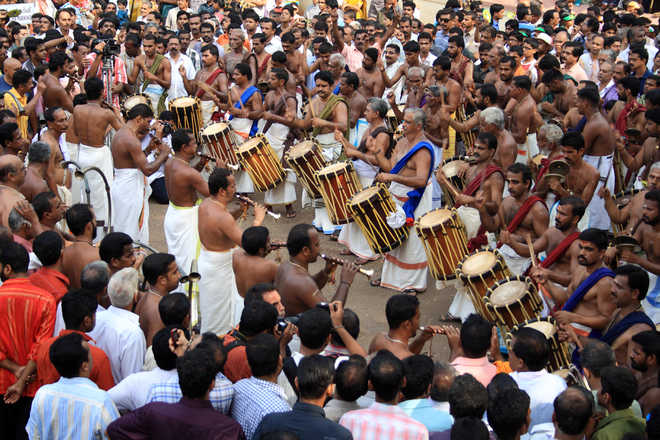Watan hai Hindustan hamara...
Priya S Tandon
Bharat is the land of diverse cultures, religions, traditions and beliefs. Every state has its own language, dress code, culture, folk songs etc. The climate varies from freezing cold in the north to sweltering hot in the south. Despite so much diversity, what makes people identify with each other? What makes them feel that they are one of a kind?
As they say birds of a feather flock together. So, what are the ‘feathers’ that determine flocking together in humans? In the land of Bharat, there are five Bhs that are bands that make us bend, bind and bond! These are “bhasha” (language), “bhusha” (dress), “bhojan” (Food), “bhajan” (prayer and congregational singing) and “bhaya” (fear).
Bhasha or language refers to the mother tongue.
No matter how many languages we learn to speak, there are times when we want to speak in our mother tongue only. If we are traveling abroad and have to converse in a foreign language and we suddenly bump into an Indian, we just want to talk in our mother tongue!
While holidaying in the US, a friend said, “Mera to mooh dukhne lag gaya hai, angrezi bol bol ke!” On the lighter side, someone said, “When I have to abuse, I do it in Punjabi because I just don’t get the feel in English!!!” Well! To each, his own!
Coming to “bhusha”, it is normal to wear western attire, especially for youngsters. Jeans in its various avatars has been in vogue since forever and is perhaps here to stay. But when we dress up for festivals, weddings or cultural events, women love their sarees and traditional suits, and the men their kurta-pyjamas. Of course, there are innovations galore in the traditional dresses too, but their simplest and original forms remain to be the most elegant. When we are in a multi-cultural event, we tend to gravitate even towards strangers who are dressed like us. There is a sense of belonging.
Coming next to “bhojan” (food), perhaps almost all cuisines are available everywhere now, but native food is what satiates our hunger best! People with similar food habits are cohesive. It is when you travel in a foreign land then you realise how much you love your native food and miss home! Chana bhatura lovers eat together and sambar-rice lovers find their own corner. Non-vegetarians too have their own niche, be it fish eaters or chicken or mutton.
Next on the list is “bhajan” (prayer). People of common faiths feel happy spending time with each other. Those who like to sing Krishna Bhajans have their own way of dancing and singing in Raasleela. Gurbani in gurdwaras has its own appeal. Kirtan of multi faiths sung along with musical instruments such as chhaina, manjeera and chimta has its own kind of charm. But its bonding effect is truly magical. Singing together amd praying together surely creates bonhomie.
Lastly, “bhaya” (fear). When there is a terror of something such as war, floods, riots etc., people huddle together. They strategise together and help each other.
Strangely, we Indians have always been enamoured by fair skin, so we tend to ape the West. But today, the vastness and richness of Indian culture is being talked about across the world. Sanskrit is being taught at Harvard University. Shalokas are being learnt and chanted in so many foreign lands.
So why is the so-called educated, contemporary Indian shunning his roots in his endeavour to become modern? Why do we always need someone from a foreign land to make us realise what we have? Why is it always, ghar ki murgi, daal barabar!
Let us not become so modern that we fail to identify with our “bhasha” and “bhusha”. Let’s make it a point to pass on the richness of our “bhajan” and “bhojan” and do so with aplomb! We owe it to our forefathers as well as to our children. Lastly, let’s remember to stand up for each other in times of “bhaya” and even otherwise. Why not? What say?









